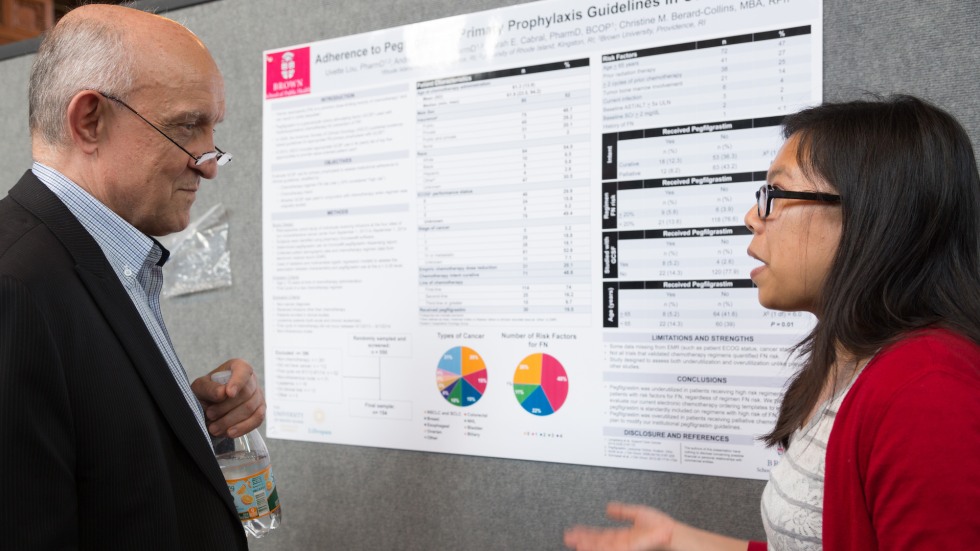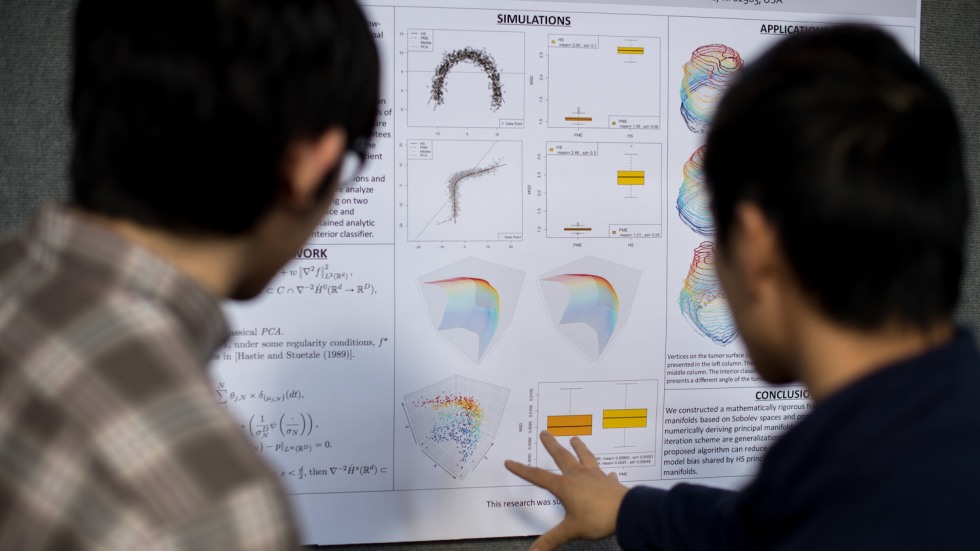When Joseph Hogan, Carole and Lawrence Sirovich Professor of Public Health and chair of the Department of Biostatistics, recruits Ph.D. candidates to Brown, he often mentions that biostatistics is the original data science. “This usually gets a couple of laughs,” he said, “but there’s a real point to highlight here.”
Data science depends on mathematics, statistics, high-level computing and deep engagement with a particular field of application, Hogan said. This lines up with the basics of biostatistics, which uses these same tools to help with making informed decisions in health care, conducting research to improve the health of populations, and uncovering mechanisms underlying biological processes.
But what sets biostatistics apart is its commitment to addressing real-world, high-impact problems. “Most of us in biostatistics got into the field because we want to make a difference,” Hogan said, “because we wanted to have an impact on human health and clinical medicine, and the understanding of human biology, because we were interested in something other than just math and statistics.”
Biostatistics, as the original data science, is also an original component of the Brown University School of Public Health. It stands alongside Behavioral and Social Sciences, Epidemiology and Health Services, Policy, and Practice as a foundational department of the school.
Origins and Growth
Established in 2011, Brown University's Department of Biostatistics is still young, but its origins trace back nearly 30 years. It began in 1995, with the formation of Brown’s Center for Statistical Sciences (CSS), led by Constantine Gatsonis, Henry Ledyard Goddard Professor of Biostatistics and CSS’s first and current director. Under Gatsonis’ leadership, the center quickly became a hub for biostatistical research and training, covering vital areas like cancer, Alzheimer’s disease, HIV, biomarker research, behavioral medicine, cardiology and digital imaging.
“The department has undergone a significant evolution since its inception,” Gatsonis said. “Initially, we began with limited resources and adopted a pragmatic ‘Brown way’ approach, prioritizing project development and research. As we secured projects and developed research initiatives, we also ventured into establishing graduate programs. The department’s ability to thrive was substantially influenced by the availability of research opportunities, collaborations, and our interdisciplinary nature.”
An important moment for CSS came with the introduction of degree programs in biostatistics, beginning with undergraduate concentration in statistics in 1997. Biostatistics education at Brown expanded to doctoral programs in 1999, with masters of science and masters of arts degrees in biostatistics added in 2007.
In 2005, Brown University awarded its first doctoral degree in biostatistics to Mei-Hsiu Chen Ph.D.'05, who now serves as the director of statistical consulting in the Department of Mathematics and Statistics at Binghamton University. After completing a master’s degree in statistics, Chen began work as a staff statistician alongside Gatsonis at CSS. There, she worked on clinical trials, developing her skills in data analysis and results dissemination.


